Kaiiki
by Hiroshi Uemoto
Photographs: Hiroshi Uemoto
Publisher: Sokyu-sha
72 pages
Pictures: 64 black and white illustrations
Year: 2013
Comments: Hardcover, 24.5cm x 24.5cm
Although the story of Japanese kamikaze suicide air pilots during World War II is well-known, lesser known -- and indeed less effective, if such a word can be used -- was the suicide manned torpedos known as kaiten, literally "turning the heavens".
The training site for this program was Otsushima island in the Seto Inland Sea, and photographer Hiroshi Uemoto first traveled there in his 20s in search of material to shoot, but it wasn't until 30 years later than Uemoto felt he could make sense of the place and convey some of what the young soldiers sent there must have felt as they pondered their impending fate.
The book is primarily made up of seascapes taken from the island, though there is the occasional reminder of the military history of the place. The images are dark and murky, yet beautifully composed and realized. They can be appreciated on their own without needing to know the "back story" as it were. Nevertheless, in their totality and in the context of what we know about the place, there is the very clear sense of menace and tragedy lurking underneath the surface.
more books tagged »Japanese« | >> see all
-
Hanon (signed)
by Yoshinori Mizutani
sold out -
Yusurika
by Yoshinori Mizutani
sold out -
Misao The Big Mama And Fukumaru The Cat
by Miyoko Ihara
sold out -
Front Window
by Soichiro Yamaguchi
Euro 50 -
Issan (signed)
by Eriko Koga
Euro 50 -
Colors (signed)
by Yoshinori Mizutani
sold out
more books tagged »war« | >> see all
-
THIS IS WHAT HATRED DID (signed - last copy)
by Cristina de Middel
Euro 135 -
American Chaos
by Paolo Woods
sold out -
Feud (signed)
by Olga Matveeva
Euro 39 -
Congo Democratic
by Guy Tillim
sold out -
THIS IS WHAT HATRED DID
by Cristina de Middel
Euro 66 -
Farewell to Bosnia
by Gilles Peress
Euro 165
more books tagged »landscape« | >> see all
-
The Land Archive Vol. 6 (signed)
by Robert Zhao Renhui
sold out -
Sevastopol (signed)
by Milan Bureš
Euro 22 -
Hariban Award 2014 Catalogue - (Sequester)
by Awoiska Van Der Molen
sold out -
Twice
by Cyrille Weiner
sold out -
Almost there (last copy)
by Aleix Plademunt
Euro 70 -
We Make the Path by Walking (signed - last copy)
by Paul Gaffney
sold out
more books tagged »black and white« | >> see all
-
All about Golf (signed)
by Regina Anzenberger
Euro 63.80 -
Gesichter der Fotografie. Begegnungen mit 50 Meisterfotografen...
by Tina Ruisinger
sold out -
Zine Collection N°18: Reves de Femmes (signed+print)
by Renée Jacobs
sold out -
The theory of a naked body
by various photographers
Euro 22 -
Snowflakes Dog Man (signed)
by Hajime Kimura
sold out -
The End of Manufacturing
by John Myers
Euro 25
Random selection from the Virtual bookshelf josefchladek.com
Kaiiki
by Hiroshi Uemoto
Photographs: Hiroshi Uemoto
Publisher: Sokyu-sha
72 pages
Pictures: 64 black and white illustrations
Year: 2013
Comments: Hardcover, 24.5cm x 24.5cm
Although the story of Japanese kamikaze suicide air pilots during World War II is well-known, lesser known -- and indeed less effective, if such a word can be used -- was the suicide manned torpedos known as kaiten, literally "turning the heavens".
The training site for this program was Otsushima island in the Seto Inland Sea, and photographer Hiroshi Uemoto first traveled there in his 20s in search of material to shoot, but it wasn't until 30 years later than Uemoto felt he could make sense of the place and convey some of what the young soldiers sent there must have felt as they pondered their impending fate.
The book is primarily made up of seascapes taken from the island, though there is the occasional reminder of the military history of the place. The images are dark and murky, yet beautifully composed and realized. They can be appreciated on their own without needing to know the "back story" as it were. Nevertheless, in their totality and in the context of what we know about the place, there is the very clear sense of menace and tragedy lurking underneath the surface.
more books tagged »Japanese« | >> see all
-
Hanon (signed)
by Yoshinori Mizutani
sold out -
Yusurika
by Yoshinori Mizutani
sold out -
Misao The Big Mama And Fukumaru The Cat
by Miyoko Ihara
sold out -
Front Window
by Soichiro Yamaguchi
Euro 50 -
Issan (signed)
by Eriko Koga
Euro 50 -
Colors (signed)
by Yoshinori Mizutani
sold out
more books tagged »war« | >> see all
-
THIS IS WHAT HATRED DID (signed - last copy)
by Cristina de Middel
Euro 135 -
American Chaos
by Paolo Woods
sold out -
Feud (signed)
by Olga Matveeva
Euro 39 -
Congo Democratic
by Guy Tillim
sold out -
THIS IS WHAT HATRED DID
by Cristina de Middel
Euro 66 -
Farewell to Bosnia
by Gilles Peress
Euro 165
more books tagged »landscape« | >> see all
-
The Land Archive Vol. 6 (signed)
by Robert Zhao Renhui
sold out -
Sevastopol (signed)
by Milan Bureš
Euro 22 -
Hariban Award 2014 Catalogue - (Sequester)
by Awoiska Van Der Molen
sold out -
Twice
by Cyrille Weiner
sold out -
Almost there (last copy)
by Aleix Plademunt
Euro 70 -
We Make the Path by Walking (signed - last copy)
by Paul Gaffney
sold out
more books tagged »black and white« | >> see all
-
All about Golf (signed)
by Regina Anzenberger
Euro 63.80 -
Gesichter der Fotografie. Begegnungen mit 50 Meisterfotografen...
by Tina Ruisinger
sold out -
Zine Collection N°18: Reves de Femmes (signed+print)
by Renée Jacobs
sold out -
The theory of a naked body
by various photographers
Euro 22 -
Snowflakes Dog Man (signed)
by Hajime Kimura
sold out -
The End of Manufacturing
by John Myers
Euro 25
Random selection from the Virtual bookshelf josefchladek.com
Kaiiki
by Hiroshi Uemoto
Photographs: Hiroshi Uemoto
Publisher: Sokyu-sha
72 pages
Pictures: 64 black and white illustrations
Year: 2013
Comments: Hardcover, 24.5cm x 24.5cm
Although the story of Japanese kamikaze suicide air pilots during World War II is well-known, lesser known -- and indeed less effective, if such a word can be used -- was the suicide manned torpedos known as kaiten, literally "turning the heavens".
The training site for this program was Otsushima island in the Seto Inland Sea, and photographer Hiroshi Uemoto first traveled there in his 20s in search of material to shoot, but it wasn't until 30 years later than Uemoto felt he could make sense of the place and convey some of what the young soldiers sent there must have felt as they pondered their impending fate.
The book is primarily made up of seascapes taken from the island, though there is the occasional reminder of the military history of the place. The images are dark and murky, yet beautifully composed and realized. They can be appreciated on their own without needing to know the "back story" as it were. Nevertheless, in their totality and in the context of what we know about the place, there is the very clear sense of menace and tragedy lurking underneath the surface.
more books tagged »Japanese« | >> see all
-
Hanon (signed)
by Yoshinori Mizutani
sold out -
Yusurika
by Yoshinori Mizutani
sold out -
Misao The Big Mama And Fukumaru The Cat
by Miyoko Ihara
sold out -
Front Window
by Soichiro Yamaguchi
Euro 50 -
Issan (signed)
by Eriko Koga
Euro 50 -
Colors (signed)
by Yoshinori Mizutani
sold out
more books tagged »war« | >> see all
-
THIS IS WHAT HATRED DID (signed - last copy)
by Cristina de Middel
Euro 135 -
American Chaos
by Paolo Woods
sold out -
Feud (signed)
by Olga Matveeva
Euro 39 -
Congo Democratic
by Guy Tillim
sold out -
THIS IS WHAT HATRED DID
by Cristina de Middel
Euro 66 -
Farewell to Bosnia
by Gilles Peress
Euro 165
more books tagged »landscape« | >> see all
-
The Land Archive Vol. 6 (signed)
by Robert Zhao Renhui
sold out -
Sevastopol (signed)
by Milan Bureš
Euro 22 -
Hariban Award 2014 Catalogue - (Sequester)
by Awoiska Van Der Molen
sold out -
Twice
by Cyrille Weiner
sold out -
Almost there (last copy)
by Aleix Plademunt
Euro 70 -
We Make the Path by Walking (signed - last copy)
by Paul Gaffney
sold out
more books tagged »black and white« | >> see all
-
All about Golf (signed)
by Regina Anzenberger
Euro 63.80 -
Gesichter der Fotografie. Begegnungen mit 50 Meisterfotografen...
by Tina Ruisinger
sold out -
Zine Collection N°18: Reves de Femmes (signed+print)
by Renée Jacobs
sold out -
The theory of a naked body
by various photographers
Euro 22 -
Snowflakes Dog Man (signed)
by Hajime Kimura
sold out -
The End of Manufacturing
by John Myers
Euro 25
Random selection from the Virtual bookshelf josefchladek.com

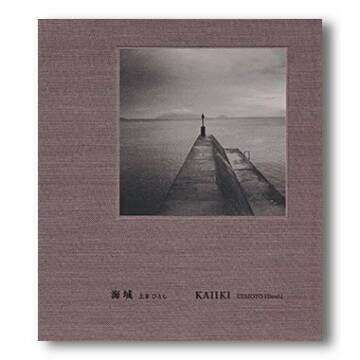


























;jpg?c=a8b4058f71c86b1b489d9c6b418c3d8d)
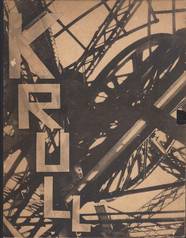
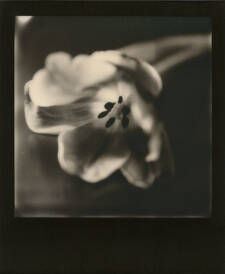


;jpg?c=756810346dff442578cb514a4d86b653)
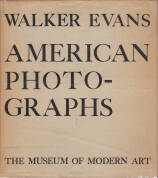

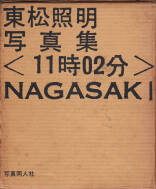

;jpg?c=a959f411f378cab4c983f304e3ac3668)

_(深瀬_昌久_遊戯_映像の現代4);jpg?c=fcb3804a689cc8a82868e2a5b48119cf)